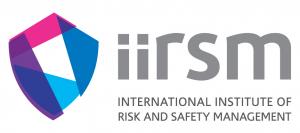Safety Leadership Training
Still have a question?
If you can’t find the answer to your questions, please get in touch.
At a Glance

What we do
Who relishes slide after slide of dry theory and prescriptive learning? Some may; most would want to avoid it and we’re pretty sure you’ll be with the majority! As a general rule people learn best when they can apply theoretical concepts to their personal role and situation. So when covering material in our Safety Leadership course, we follow our Explore > Engage > Embed model:
Explore > Engage > Embed
Each engagement is unique; we start by getting to grips with where you are as an organisation and work with you to tailor your training to maximise its impact and any previous training investments.
We seek to align materials to your organisation’s existing tools, processes and jargon where deemed appropriate, as well as incorporating case studies that will resonate with leaders within your industry sector.
Ideally we like to split the course into two separate blocks. By introducing a break before the final day(s), delegates have the opportunity to reflect on learning and apply some of the concepts covered in their day-to-day role. Coming back to the final day(s) of the course, they will be encouraged to discuss their experiences and reflect on what did and didn’t work and why.
- The impact of leadership on culture
- The elements of culture that need leadership
- Identifying human fallibility types (errors vs violations)
- Just Culture – accountability and recognition
Selecting the right leadership style for the right situation:
- Matching leadership styles to people
- Matching leadership styles to purpose
- Identifying leadership traits
- Impacting the organisation
- Impacting others
- Self development
Putting Safety Positively – The Art of Curious Conversations:
- Theory, Discussion, Demonstration
- Practical Conversations – practising
We give you the structure of a good conversation, tips on making it sound authentic and a safe space in which to practise.
- Components of a powerful narrative
- Creating the conditions for engagement
Optionally, we can provide follow-up coaching for leaders, supporting the implementation of learning points and techniques in their day-to-day role and team operations. This can take place face-to-face or online to suit the individuals involved.
Why?
Soft skills are notoriously hard to teach. Strong safety leadership is critical to the development of an organisation’s safety culture, and yet leaders often lack the tools, practical experience or confidence they need in order to lead safely.
Our Safety Leadership Course is designed to provide people in leadership roles with the skills to understand how and what influences people to take risk and how to effectively manage people and influence their behaviour. It helps leaders understand how they might unwittingly misrepresent and underestimate risks and hazards – and gives them the tools and techniques to alter perceptions.
Who should attend our Safety Leadership Training?
Our Safety Leadership Training is suitable for leaders at any level of an organisation, from shop floor to boardroom. We are happy to train cohorts of people at a similar level in the organisation or from multiple levels.
What’s in it for you?
As this course is consultant-led rather than trainer-led, it is worlds away from regurgitating a pre-formatted script. Together with the delegates, we create a space to explore the subject in-depth, engage in discussion and hence fully embed learning, resulting in an immensely powerful learning experience.
Specific outcomes will vary dependant on personal commitments of leaders and follow-up embedding within the organisation, but typically should include:
- An increase in positive safety leadership and curious conversations, leading to far better information exchange
- Increased positive role-modelling of safe behaviours by management and supervisors and increased identification, recognition and praise for ‘everyday’ safe behaviours
- Less ‘knee-jerk’ blame and more ‘just’ and fair responses to workplace issues
- Enhanced engagement and involvement by the workforce in safety
All of the above will strengthen your organisation’s safety culture. This is pertinent to the organisation because it will support the business in preventing future accidents, reducing lost time incident rate, and improving leadership skills at all levels.
Materials/Certification
All delegates will receive:
- Workbook with a copy of the course slides and plain notes pages for delegates to personalise and make notes
- IIRSM-approved course certificate
As part of the training course, each attendee will create their own personal improvement plan, suitable for integrating into future appraisals.
The level of engagement and understanding of each candidate will be informally assessed by the lead consultant. Post course examination is available on request for an additional fee.
Frequently Asked Questions
How much do the leaders in your organisation value safety? How much are they perceived to value safety? The latter is one of the key predictors of the strength of an organisation’s safety culture. It’s based on what leaders regularly do and say.
For example, if a manger walks past an employee not wearing the correct PPE for the job – perhaps because they do not notice it is not being worn – the employee can be left with impression that managers do not mind if safety rules are not followed. How they express any concerns they have massively influences the effectiveness of an intervention.
It is these soft signals that can play a major role in embedding safety throughout an organisation. The consistency and authenticity of leaders at any level in the organisation is crucial to building a strong safety culture. Giving them the tools and skills contained in the course maximises the opportunity to positively impact safety.
Yes! We recognise that getting leaders in a room together for a whole day or more can be challenging and we are happy to break the course down into smaller modules where needed.
In fact, we prefer to run the training course in at least two separate blocks, to allow time for reflection and application of learning in between.

